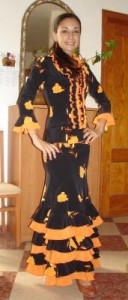 Continuing the article What Makes A Flamenco Dress (Part 1) here are some more points on what makes a typical flamenco dress:
Continuing the article What Makes A Flamenco Dress (Part 1) here are some more points on what makes a typical flamenco dress:
- What’s On The Inside?
Since you will be dancing and therefore sweating your flamenco dress generally needs to be lined (only practice skirts and blouses/shirts go without). The most commonly used material is a fine, soft cotton or poplin lining. Lining and fabric pieces are cut the same, joined and then both layers are treated as one when the dress is sewn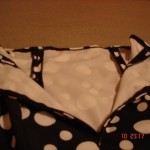 . In most cases the lining only reaches to where the skirt flare or the ruffles start in order to not take away from the skirt’s flowing movement and to prevent the lining from showing when the dancer lifts the skirt.
. In most cases the lining only reaches to where the skirt flare or the ruffles start in order to not take away from the skirt’s flowing movement and to prevent the lining from showing when the dancer lifts the skirt. - What About Ruffles? Ruffles are very “typical flamenco” and most outfits will have them. There are two types of ruffles: circular ruffles (cut a circle and cut a smaller circle out of the middle, then sew the inner edge to the garment
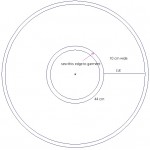 ) and gathered ruffles (cut a long rectangular strip of fabric and gather one long edge
) and gathered ruffles (cut a long rectangular strip of fabric and gather one long edge 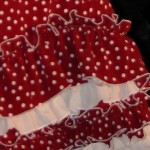 ) How big and how many ruffles an outfit will have depends on your taste and where you want to wear your skirt – for classes one or no ruffles will be fine, for a performance most dancers want some more. Often the hem of sleeves will also be finished with one or more ruffles. To finish the outer edge of the ruffles I mostly use the overlocker to make a “rolled hem” and sometimes a bias binding. Attaching a lace edging is also a nice option. When deciding on number and size of ruffles take into account that more ruffles = more weight, bigger ruffles = more weight. If you have a skirt with a lot of flare and add a lot of and/or big ruffles your skirt may end up weighing more than you feel comfortable to dance in.
) How big and how many ruffles an outfit will have depends on your taste and where you want to wear your skirt – for classes one or no ruffles will be fine, for a performance most dancers want some more. Often the hem of sleeves will also be finished with one or more ruffles. To finish the outer edge of the ruffles I mostly use the overlocker to make a “rolled hem” and sometimes a bias binding. Attaching a lace edging is also a nice option. When deciding on number and size of ruffles take into account that more ruffles = more weight, bigger ruffles = more weight. If you have a skirt with a lot of flare and add a lot of and/or big ruffles your skirt may end up weighing more than you feel comfortable to dance in. - What About Godets? A godet is a pie slice shaped piece of fabric that is inserted into a skirt (mostly the seams) to give extra flare at the hem
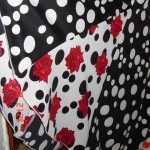 A skirt can have many godets, resulting in lots of extra flare or for example only one in the back seam. They are quite common in flamenco skirts and are a great way to let your imagination run free – using contrasting fabrics, ruffles etc.
A skirt can have many godets, resulting in lots of extra flare or for example only one in the back seam. They are quite common in flamenco skirts and are a great way to let your imagination run free – using contrasting fabrics, ruffles etc. - What Fabrics To Use? I’ve covered this topic in a separate article: Flamenco Fabrics in Granada – What to Buy





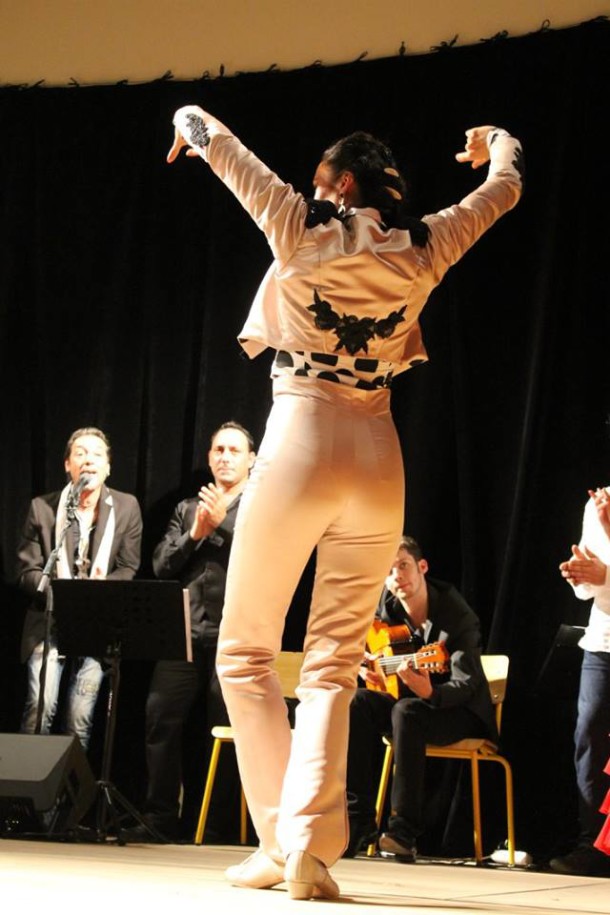
Hallo Anke! Ich komme aus Südamerika. Lebe in Wien. Eine Freundin von mir (aus Andalusia) organisiert hier Flamenco Kurse für Kinder und Erwachsene. Ich würde die Röcke für den Unterricht nähen. Also, etwas einfaches. Reicht es wenn ich einen “Teller Rock” mache? Hast du etwas in die Richtung? Es freut mich für dich, dass du so was schönes, kreatives machen kannst!! Lg, MM